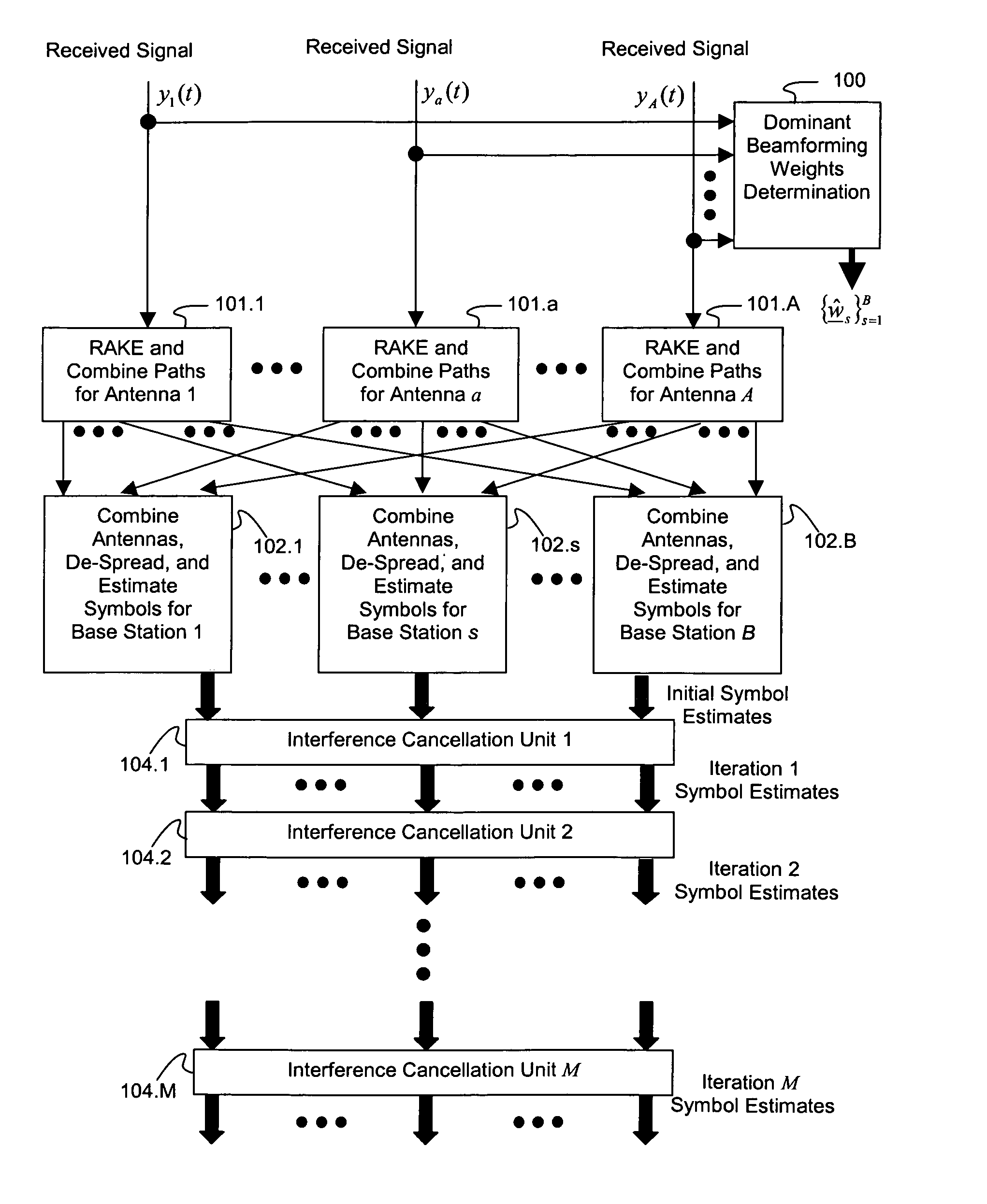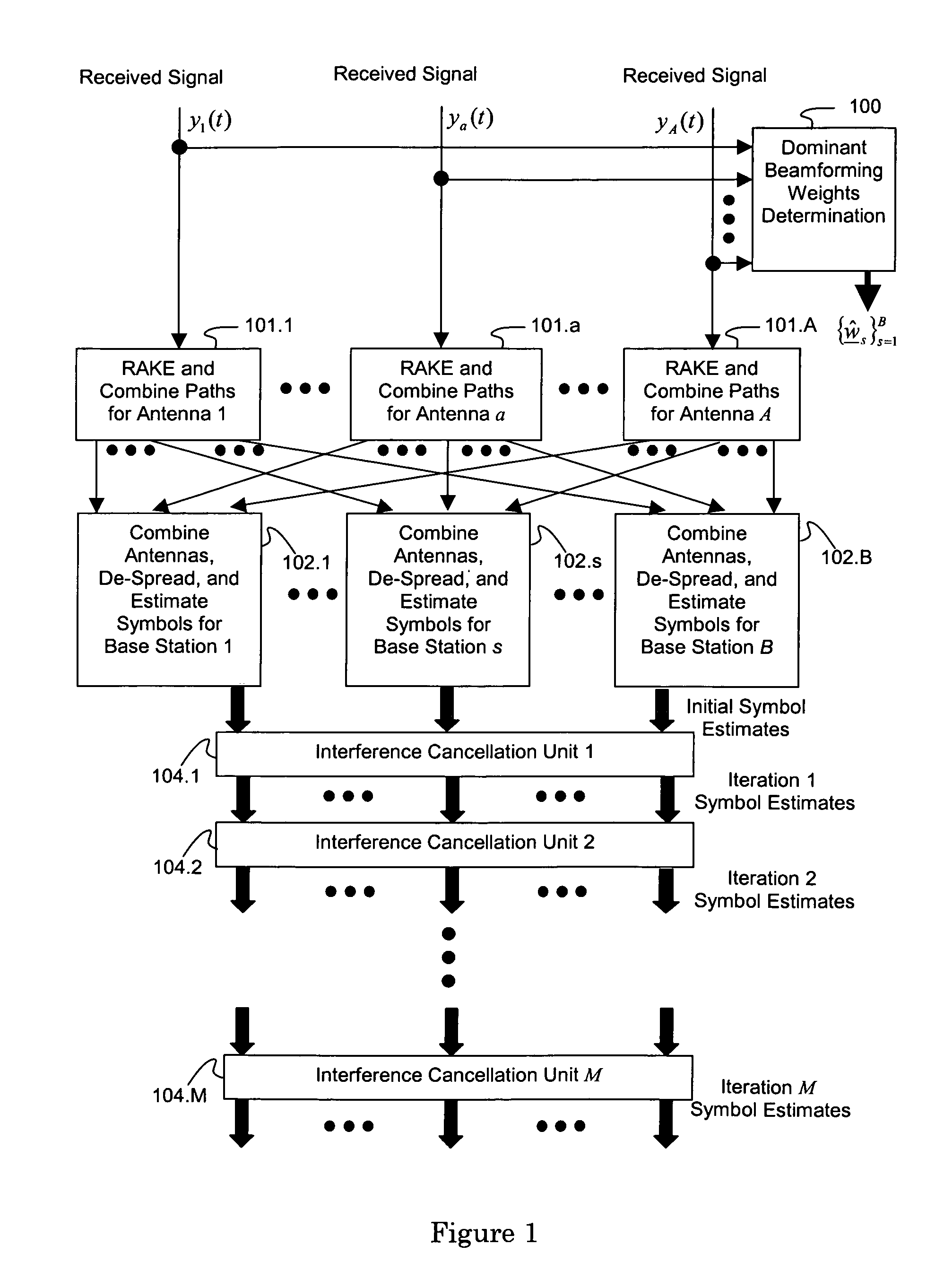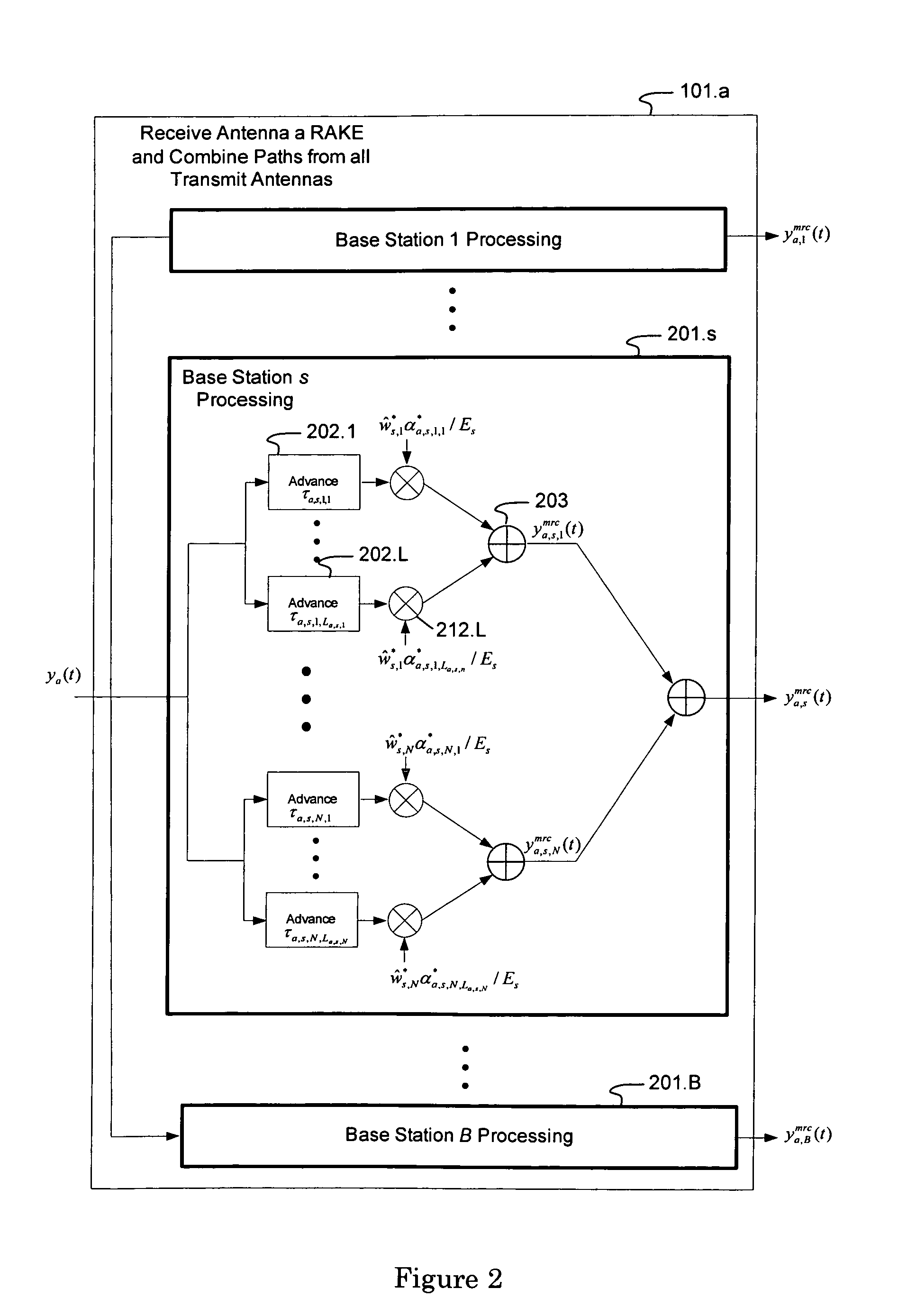Iterative interference canceller for wireless multiple-access systems employing closed loop transmit diversity
a technology of closed loop transmit diversity and interference canceller, which is applied in diversity/multi-antenna systems, digital transmission, polarisation/directional diversity, etc., can solve problems such as subchannel leakage into other subchannels, interference types, and increase the error floor of receivers, so as to maximize the signal-to-noise ratio (or the total power)
- Summary
- Abstract
- Description
- Claims
- Application Information
AI Technical Summary
Benefits of technology
Problems solved by technology
Method used
Image
Examples
Embodiment Construction
[0041]The present invention will now be described more fully hereinafter with reference to the accompanying drawings, in which preferred embodiments of the invention are shown. This invention may, however, be embodied in many different forms and should not be construed as limited to the embodiments set forth herein. Rather, these embodiments are provided so that this disclosure will be thorough and complete, and will fully convey the scope of the invention to those skilled in the art.
[0042]The following formula represents an analog baseband signal received by antenna a from multiple base stations employing CLTD when a single symbol is transmitted by each user on each symbol period (corresponding to vector-valued beam forming):
[0043]ya(t)=∑s=1B∑n=1N∑l=1La,s,nαa,s,n,l∑k=1Ksws,n,kbs,kus,k(t-τa,s,n,l)+na(t),t∈(0,T),Equation1
with the following definitions[0044]a represents the ath antenna of the mobile and ranges from 1 to A;[0045](0, T) is the symbol interval;[0046]B is...
PUM
 Login to View More
Login to View More Abstract
Description
Claims
Application Information
 Login to View More
Login to View More - R&D
- Intellectual Property
- Life Sciences
- Materials
- Tech Scout
- Unparalleled Data Quality
- Higher Quality Content
- 60% Fewer Hallucinations
Browse by: Latest US Patents, China's latest patents, Technical Efficacy Thesaurus, Application Domain, Technology Topic, Popular Technical Reports.
© 2025 PatSnap. All rights reserved.Legal|Privacy policy|Modern Slavery Act Transparency Statement|Sitemap|About US| Contact US: help@patsnap.com



